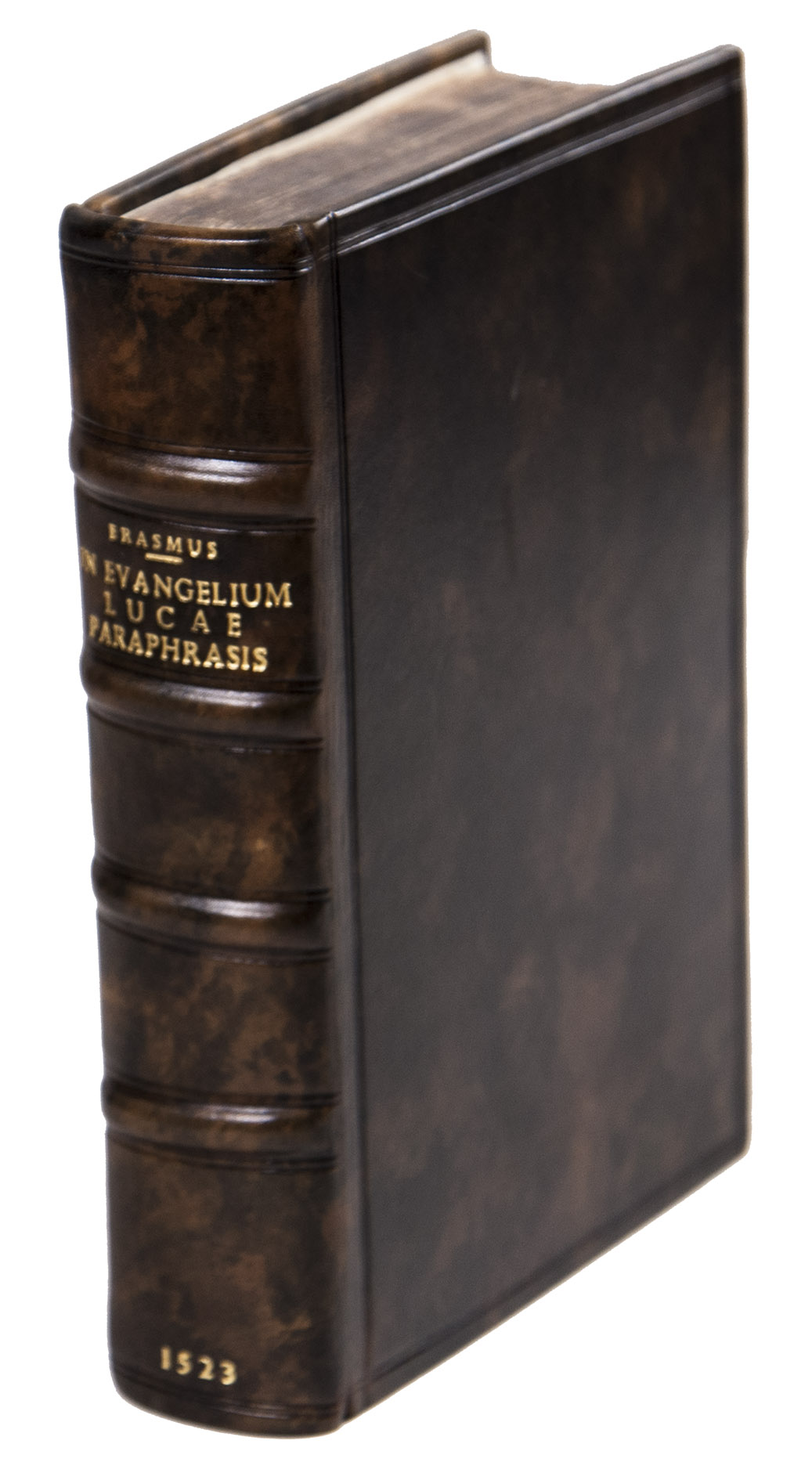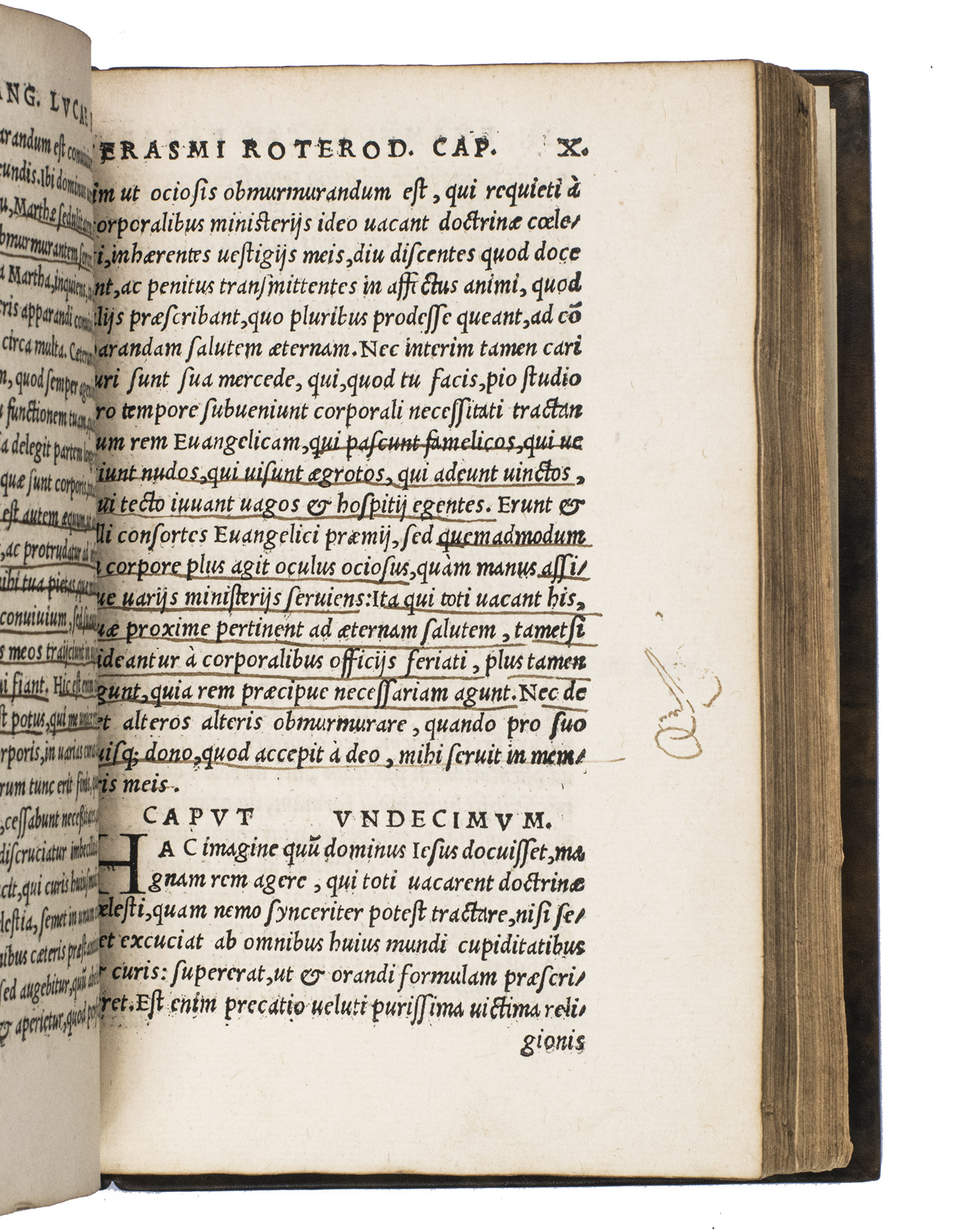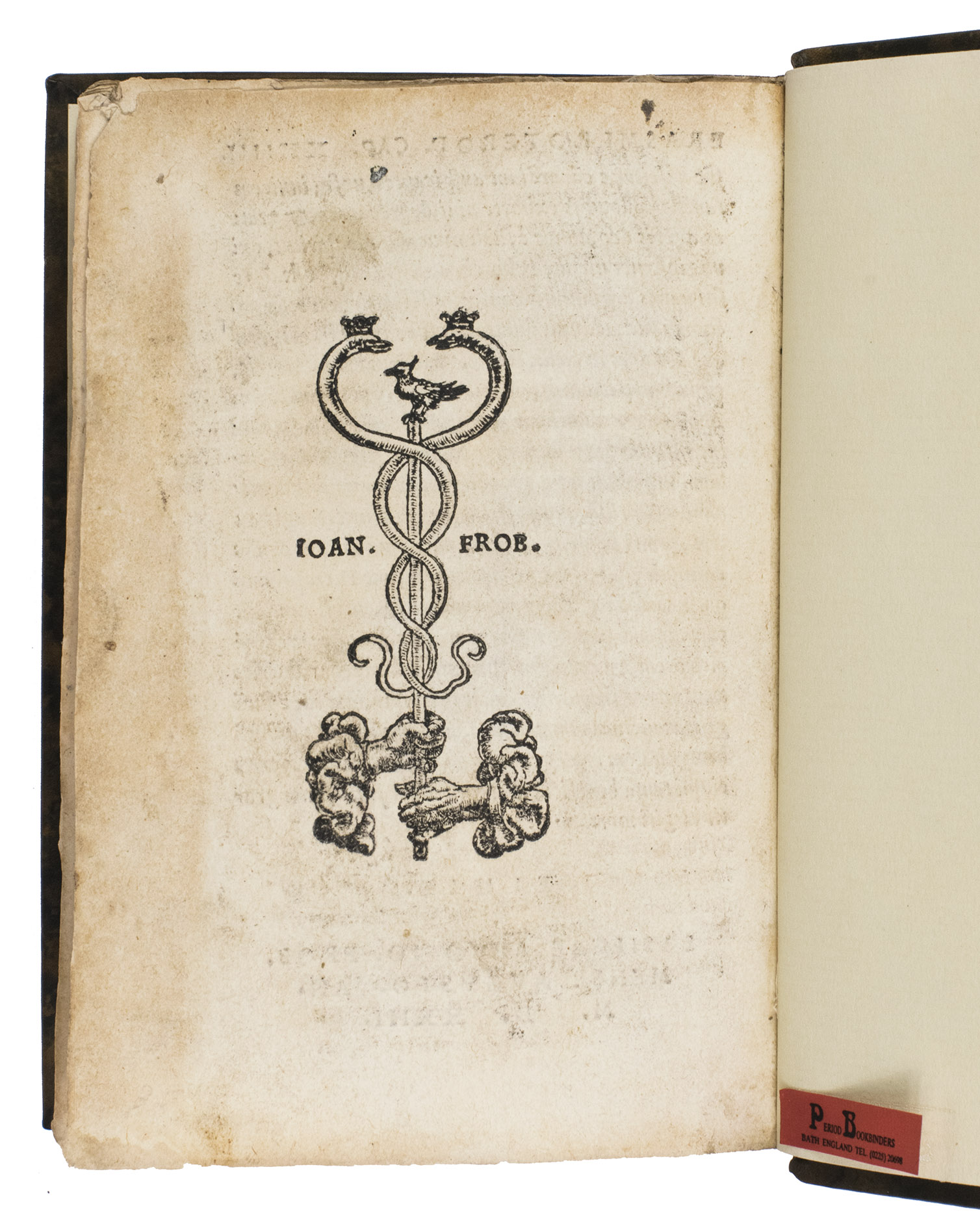ERASMUS, Desiderius
In evangelium Lucae paraphrasis Erasmi Roterodami nunc primum & nata & aedita.
Basel, Johann Froben, September 1523. Small 8vo (10.7 x 15.2 cm). With 2 small woodcut illustrations incorporating Frobens device on the title page and the verso of the final leaf, a woodcut headpiece above the dedication, and two woodcut decorated initials. Modern blind-tooled marbled calf. [275] ll.
€ 2,250
First edition of Erasmus Paraphrase on the gospel of Luke. Unlike his paraphrases on the gospels of Matthew, Mark, and John, each dedicated to rulers of France or the Holy Roman Empire, this work was addressed to King Henry VIII of England. The lengthy dedicatory preface, which spans the first twelve leaves, takes the form of a personal letter from Erasmus to the king. The Paraphrase on Luke was also unique in its format: it was the only one of the gospel paraphrases to be first published in octavo.
The Paraphrases themselves were a novel form of literature at the time: more than mere translations or commentaries, they were interpretative retellings of the gospels, aiming to clarify the theological and moral meaning of Scripture for a wider audience. Despite Erasmus towering knowledge of the Church Fathers and his editorial work on patristic texts, his method in the Paraphrase on Luke was not one of direct quotation from memory. Instead, as Jan Bloemendal states, Erasmus likely worked with various compilatory sources on his desk, texts such as Bedes commentary on Luke, the Glossa Ordinaria (a medieval annotated Bible), and Aquinas Catena Aurea, which gathered together centuries of Christian interpretation. Through these sources, Erasmus was able to channel the voice of the early Church while crafting something new and distinctly his own.
Modern scholarship has also examined the layered narrative voices in the paraphrase on Luke. According to Bloemendal, Erasmus plays with the roles of paraphrast, narrator, and evangelist, creating a subtle interplay between himself and the biblical Luke. This device allowed Erasmus to offer veiled critiques on the abuses and moral failings of his own time, under the guise of Lukes voice, while also inviting his readers into a deeper, more personal engagement with Scripture.
With some contemporary underlining' and annotations, primarily consisting of corrections, textual additions, and markings of notable passages; a later bibliographical annotation in brown ink at the head of the title page ("Panzer VI 237"), and a small bookbinders label mounted in the bottom inner corner of the recto of the final blank flyleaf ("Period Bookbinders Bath England Tel (0225) 20698"). Some small wormholes in the first 5 leaves, slightly affecting the text, the title page is slightly (dust) soiled). Otherwise in good condition. Adams E 755; Bezzel 1164; Bloemendal, ""Collected Works of Erasmus, vol. 47: Paraphrase on Luke 1-10, edited by Jane E. Phillips", Erasmus Studies," 37 (2), (2017), pp. 217-222, see p. 218; Bloemendal, "Exegesis and Hermeneutics in Erasmus Paraphrase on Luke", Erasmus studies, 36 (2), (2016), pp. 148-162; BM STC German p. 119; USTC 665710; Vander Haeghen I, 148; VD16 E 3061; not in De Reuck.
Related Subjects:






